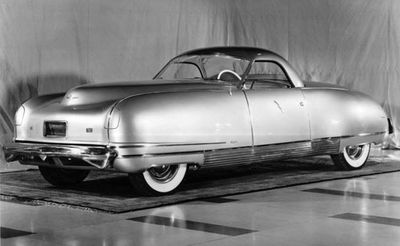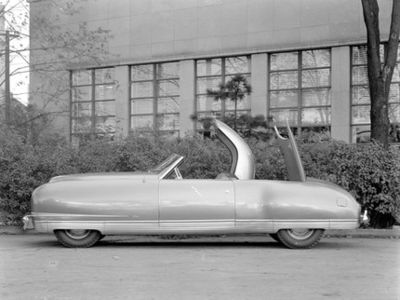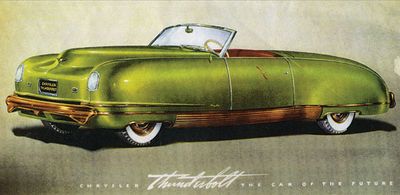1940 Chrysler Thunderbolt
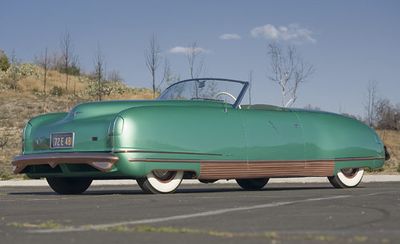

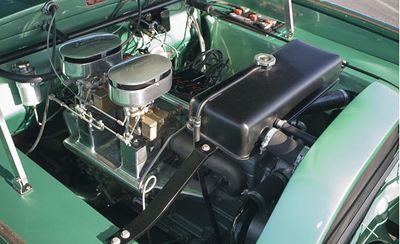
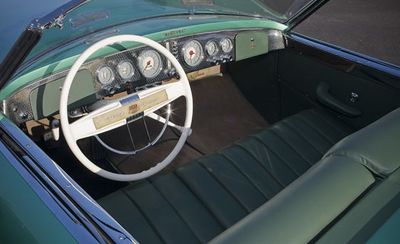

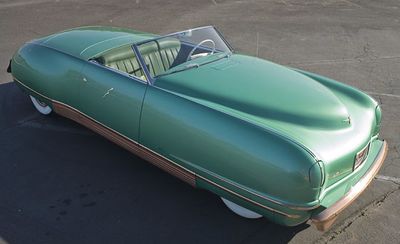
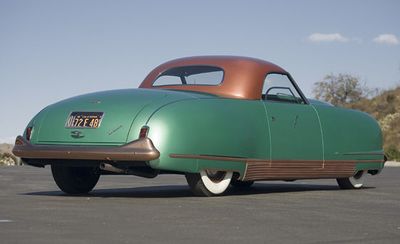

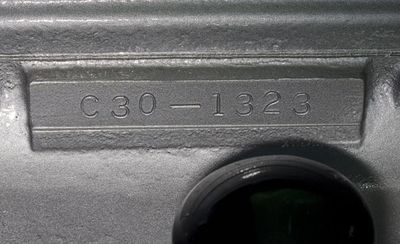


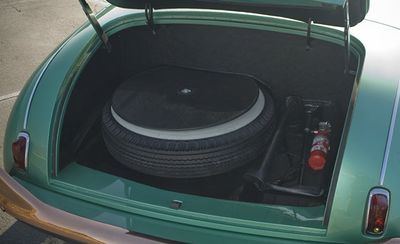
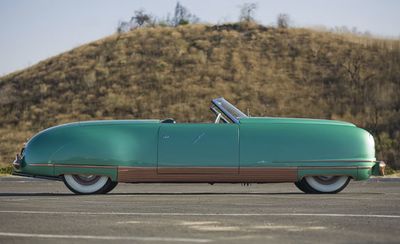
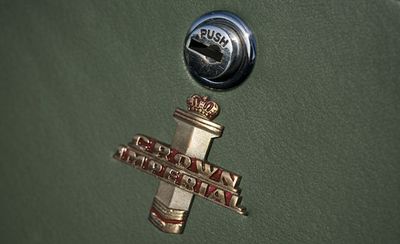

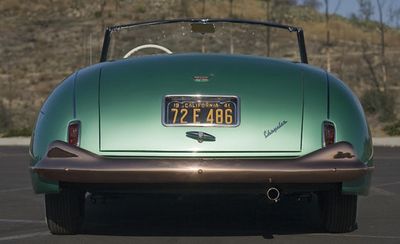
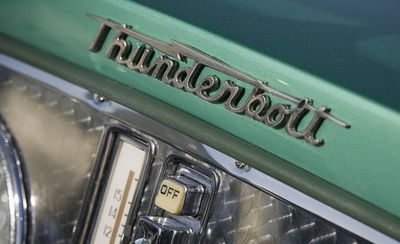
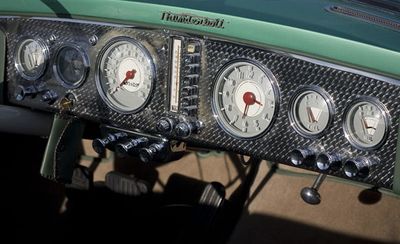
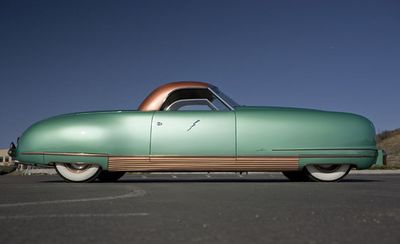
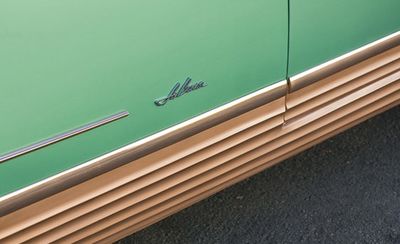
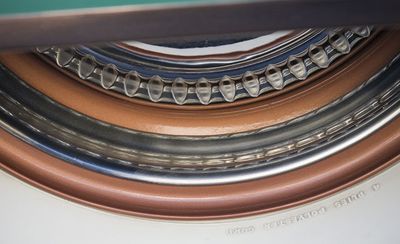
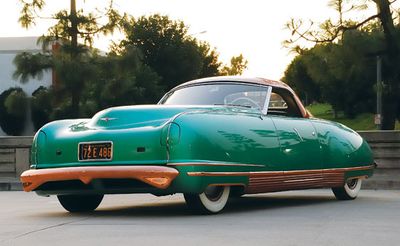
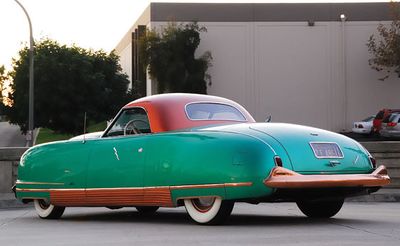



Chrysler produced many outstanding designs in its prewar history – clean, refined automobiles that captured the essence of quality, elegance and craftsmanship. Their inherent attraction, however, came not from the concepts of a talented artist like Harley Earl or even the inspiration of Edsel Ford, but rather from the subjective appeal of strongly engineered, highly functional automobiles that were complemented by their understated artistic influence.
Prior to the 1930s, Chrysler’s Art & Colour Division had been part of the Engineering department. By 1935, however, Ray Dietrich became the first official Chrysler stylist and was charged with restyling the ill-fated Airflow and adding the less radical, more attractive Airstream line. As a result of the Airflow debacle, Chrysler products in the late 1930s continued to offer competent, pleasing, but much less-radical designs.
Walter P. Chrysler might have preferred a return to his corporation’s trendsetting design philosophy, integrating advanced engineering with appropriate coachwork, but unfortunately, the health of the man who created the second-largest automaker in the world was rapidly declining. After years of service and a business acumen that helped his corporation survive the Depression, Mr. Chrysler resigned in 1938, passing away less than two years later. The corporation restructured and found a new leader in K.T. Keller, who had been its President since 1935. Keller acutely recognized Chrysler’s need for increased exposure to draw prospective customers.
In 1940, the business of building “show” or “concept” cars was still in its infancy. In fact, the showcasing of potential future styling and innovations was effectively pioneered just two years earlier by Harley Earl with his groundbreaking Buick Y-Job. Given its success, it did not take long for other automobile manufacturers to recognize the need to follow Earl’s and GM’s lead. By the start of World War II, Ford was the only company not producing any “idea cars.”
The Thunderbolt concept was born of a thoughtful pitch in 1939 by Alex Tremulis to Ralph Roberts at LeBaron. At the time, Tremulis was a promising young designer at Briggs Manufacturing, LeBaron’s parent company, who later went on to help design the short-lived but legendary Tucker Torpedo. Roberts was so impressed with the proposal that he organized a meeting with K.T. Keller and Chrysler division president Dave Wallace to discuss the possibility of creating two all-new dream cars.
Keller and Wallace approved the project, and both Roberts and Tremulis took full advantage of their new-found opportunity. By the late 1930s, the market for custom coachwork had largely evaporated, hit hard by the Depression and the efforts of corporate stylists like GM’s Harley Earl and Ford’s E.T. “Bob” Gregorie. Consequently, LeBaron was left with little work. The Thunderbolt and Newport, on the other hand, became two of LeBaron’s most interesting and final endeavors, as the onset of full-scale American involvement in World War II would soon force the company to ultimately halt production.
If the Newport was modern-looking, the Thunderbolt was beyond futuristic. It utilized a full-envelope body with retractable headlights. It was also the very first convertible with a fully-retractable hard top, which was designed, developed and patented by Ralph Roberts. It was shorter than the Newport, with seating for three on a wide bench seat. The Thunderbolt had a straight-through fender line with no dip or belt molding of any kind, and both the front and rear wheels were covered with fender skirts. Truly a unique design feature – there was no recognizable grille, as the air intakes were cleverly located below the front bumper.
With the exception of the steel hood and deck lid, the body was constructed of aluminum, with a metal trim molding wrapping almost entirely around the car. Its design and construction was so impressive that, upon seeing the design, Keller asked how they were going to bend it around the front end. In response, Tremulis said they would make that section of brass and plate it. Delighted, Keller replied, “Sometimes you stylists think like engineers and make sense.”
The Chrysler Thunderbolt was named after the land speed record-holding car that Captain George Eyston drove at 357.53 mph over the measured mile at the Bonneville Salt Flats in September of 1938. Eyston’s own Thunderbolt was powered by dual twelve-cylinder Rolls-Royce aero engines, was more than 30 feet long and weighed 7 tons. Chrysler’s Thunderbolt, in contrast, made use of a considerably shorter 127.5-inch New Yorker chassis and a 323.5 cubic inch, “Spitfire” L-head inline eight-cylinder engine rated at 140 horsepower and 255 foot pounds of torque. As a prototype, the Thunderbolt also employed the three-speed Fluid Drive transmission that was not to see full development until after World War II on production Chrysler models. Additionally, it also featured an overdrive unit that permitted speeds in excess of 100 mph.
The Thunderbolt had push-button door switches both inside and out – yet another groundbreaking design cue. The interior was lavishly appointed in leather and Bedford cord, while the dash featured design advancements all its own. It was also the first modern motor car to use back-lit, Lucite-edged illuminated gauges; inlaid into the dash, they perfectly complemented the Imperial steering wheel and vertically mounted and inset radio.
Without question, the Thunderbolt’s most impressive design feature was the ingeniously designed, electrically operated, retractable hardtop. The flick of one switch activated three separate synchronized operations that caused the top to retract into a space behind the bench seat. Access to the trunk was provided via a fully automatic sliding rear decklid – truly an incredible engineering task in 1941 and one that was not seen again on a production car until the Ford Fairlane 500 Skyliner of 1957.
Each of the five original Thunderbolts received a different color combination and was marked by a discreet lightning bolt on the smoothly contoured aluminum doors. Subtle differences, such as the exterior wraparound trim and dashboard finishes, made each car unique from the others. The curved windshield design proved to be a serious challenge, as it had never been used on an automobile before, and the glass companies had nothing like it ready for immediate use. Fortunately, the firm commissioned for the project produced a suitable windshield just in time without having to revert to a split V-type piece. In fact, this single hallmark would not appear on regular production cars until the early 1950s.
In order to meet the Thunderbolt’s short building deadline, aluminum side skin panels were applied over solid oak substructures, while the trunk and the hood were all made of steel. Chrysler engineers worked hand in hand with LeBaron, ensuring the integrity and quality of the cars would not be compromised under the tight time constraints of the project. Following completion, the Thunderbolt and Newport cars were sent on promotional tours and were exhibited everywhere from local dealerships to the Indianapolis 500, where the Newport was used as a pace car in 1941. The Thunderbolt achieved not only its initial function of promoting Chrysler as a vanguard of styling ideas, but also exceeded it by becoming a concept car of unprecedented importance at a time when its meaning could easily have paled in comparison to the dramatic world events of the time.
The cars caravanned across the country and attracted tremendous crowds. Quite frequently, showroom lights were turned off, urging visitors to leave, as they often had a tendency to linger until well past midnight. A Sacramento, California Chrysler dealer even reported 8,500 visitors to his dealership on the day a Thunderbolt was in his showroom. A winter weekend in Denver attracted 29,000 visitors who braved the snow and hail to view Chrysler’s latest creation.
Chrysler Corporation documentation and research indicate that only five Thunderbolts were ever built, each with a different body and top color combination. All were produced for the show circuit. Today, only four remain and the example offered here, chassis 7807943, is considered to be perhaps the most period correct example in existence. Regardless of their condition and location, each one is a treasured and highly coveted showpiece that is seldom offered for public sale.
This particular Thunderbolt is known to enthusiasts as “the Copper Car” which was originally constructed with both a copper retractable roof and lower body trim. When its show career with Chrysler eventually ended, the Thunderbolt was sold to its first owner, actor Bruce Cabot, in March 1941. In 1954, a 331 cubic inch hemi-head Chrysler engine was installed by B & H Motors of San Francisco, California, while the original “Spitfire” eight-cylinder engine was installed in a 1932 Chrysler CP-8 Convertible Sedan owned by Mr. Fred Wildenradt of Pebble Beach. In 1960, the Thunderbolt was acquired by Bill Harrah, the famous casino magnate and automobile collector, from the Paul Stern collection of Manheim, Pennsylvania. In September 1985, the current owner purchased the Thunderbolt from the dispersal auction of the Harrah Collection, and miraculously, the original “Spitfire” engine was located, purchased and reunited with the Thunderbolt.
Chris Kidd and his award-winning team at Tired Iron Works of Monrovia, California completed a complete, body-off-frame restoration in 2009. The structural wood for the aluminum bodywork and metal panels was replaced as needed, and the Spitfire eight-cylinder engine was rebuilt and fitted with dual carburetors. New lower body trim was fashioned from copper as well. The dash and instruments were rebuilt. Kidd and his staff also paid close attention to the retractable top mechanism. Following extensive study and discussion, Tired Iron Works devised a torque tube for the top mechanism, ensuring that the gears would be properly aligned at all times, finally solving an engineering issue that has remained since the cars were originally produced and ensuring reliable operation of this crucial design feature.
Despite exhaustive research, no factory records exist of the original exterior paint colors of the Thunderbolts. Interestingly, a security guard at Chrysler is reported to have independently tracked the movements of the cars, noting that they were actually repainted several times during their active show careers with Chrysler. The Teal Green finish on this example was arrived at by referring to an artist’s conception of the car in period, in addition to extensive consultation with the current owner.
Soon after the restoration was completed in 2009, the Thunderbolt was displayed at the Amelia Island Concours d’Elegance where it easily took the Camille Jenatzy Award for the Car with the Most Audacious Exterior. Next, the Thunderbolt was shown at the prestigious Pebble Beach Concours d’Elegance in August, where it was awarded a third-place ribbon in Class C-2: American Classic Open 1933-1941. Then, at the Concours d’Elegance at the St. Regis Resort at Newport Beach, the Thunderbird was awarded first in class, with a perfect score of 100 points.
One of the Thunderbolts were offered for sale at the Automobiles of Arizona auction January 22, 2010 in Phoenix, Arizona. The car was not sold at a high bid of $1,175,000.[1] The same Thunderbolt was also offered for sale at the RM Monterey Auction in August of 2011. Estimated to sell between $900,000 - $1,200,000, the car was sold at a price of $935,000.[2]
References
Did you enjoy this article?
Kustomrama is an encyclopedia dedicated to preserve, share and protect traditional hot rod and custom car history from all over the world.
- Help us keep history alive. For as little as 2.99 USD a month you can become a monthly supporter. Click here to learn more.
- Subscribe to our free newsletter and receive regular updates and stories from Kustomrama.
- Do you know someone who would enjoy this article? Click here to forward it.
Can you help us make this article better?
Please get in touch with us at mail@kustomrama.com if you have additional information or photos to share about 1940 Chrysler Thunderbolt.
This article was made possible by:
SunTec Auto Glass - Auto Glass Services on Vintage and Classic Cars
Finding a replacement windshield, back or side glass can be a difficult task when restoring your vintage or custom classic car. It doesn't have to be though now with auto glass specialist companies like www.suntecautoglass.com. They can source OEM or OEM-equivalent glass for older makes/models; which will ensure a proper fit every time. Check them out for more details!
Do you want to see your company here? Click here for more info about how you can advertise your business on Kustomrama.
